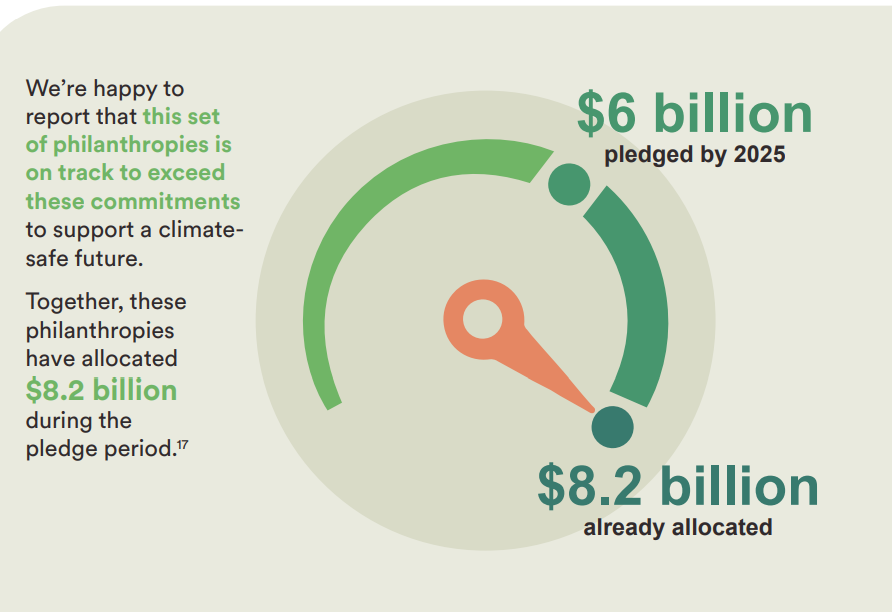Funding trends 2021: Climate change mitigation philanthropy
By Helene Desanlis, Elin Matsumae, Hannah Roeyer, Anthony Yazaki, Muniba Ahmad, and Surabi Menon
Source: ClimateWorks Global Intelligence
This report is a follow-up to ClimateWork’s 2020 publication, “Funding trends: Climate change mitigation philanthropy.” This updated version covers six years of funding data over 2015-2020.
Highlights from the report include:
• The increase of major donors and collaborative commitments: Even with global events like the Covid-19
pandemic dampening economic growth in the last year, the arrival of major donors committing billions of dollars
to climate change mitigation such as the Bezos Earth Fund has helped create new momentum in philanthropic
giving to climate solutions poised for rapid growth.
• A growing emphasis on equity: Last year we saw the growth of social justice movements across the world,
particularly in the U.S. Philanthropy was asked to step up its focus on equity and justice issues, and we saw nearly
$500 million was committed to racial justice by U.S. foundations in 2020. There is a need to see a massive and urgent scale-up in funds for climate solutions that integrate equity and justice, in order to drive a rapid transition toward net-zero emissions that don’t leave behind the most vulnerable.
• Philanthropy exceeding major funding pledges: The good news is that the pledges have been met or exceeded, indicating that philanthropy is serious about meeting its goals and that the grantee field is ready to absorb large-scale resources to take action.
Progress on climate philanthropy pledges
In 2018, 29 philanthropies pledged $4 billion over the next five years to combat climate change at the Global Climate
Action Summit (GCAS). The funding pledged by these philanthropies supports a vast array of strategies to advance
affordable, low- and zero-carbon solutions to reduce greenhouse gas emissions.
In conclusion, immediate action is required to support both short- and long-term solutions. We can’t afford any more delays, and philanthropy can help catalyse investment in public and private sector solutions by funding high-risk, early-stage, or politically sensitive work that other sources of capital can’t or won’t fund.
Still, there is an urgent need to increase the proportion of philanthropy dedicated to climate change mitigation and break through the 2% barrier. To get to 3%, we need to double current contributions to climate change mitigation (assuming a 3% increase in overall funding). Funders from various causes must work together to address climate change before the effects of climate change reverse the gains made by philanthropy in other areas.
There are numerous entry points for new funders to easily enter the climate change mitigation field. For example, the Climate Leadership Initiative assists philanthropists by matching their interests to climate solutions that are ready for global scale.



